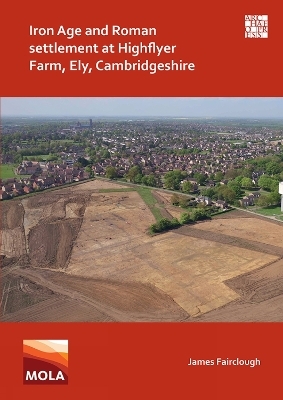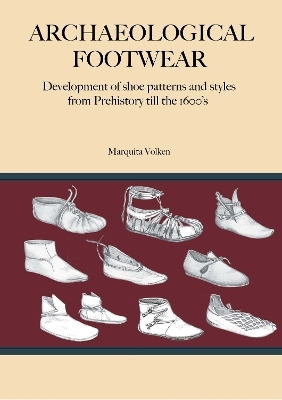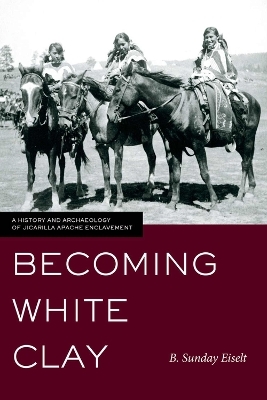
Iron Age and Roman Settlement at Highflyer Farm, Ely, Cambridgeshire
Archaeopress (Verlag)
978-1-78969-842-8 (ISBN)
Iron Age and Roman settlement at Highflyer Farm, Ely, Cambridgeshire presents the results of archaeological work carried out by MOLA (Museum of London Archaeology) at Highflyer Farm in 2018. Remains dating from the Neolithic to the post-medieval period were recorded, with most of the activity occurring between the early Iron Age and late Roman periods. Excavations in 2000 at Prickwillow Road, undertaken directly to the south of Highflyer Farm, had recorded the southern extent of this Iron Age to Roman settlement.
Two features, a pit and a posthole, were dated to the late Neolithic to early Bronze Age. In the 5th to 4th centuries BC a small open early Iron Age settlement was established and was at the lower end of the settlement hierarchy, perhaps occupied by a single family or a seasonal group. In the middle Iron Age, there was a well-planned linear settlement split into three main sections, which consisted of a similar large rounded enclosure at its northern and southern extent, both probably domestic. A complex sub-rectangular arrangement of enclosures and boundaries lay within the centre, a roughly equal distance apart from the circular enclosures. In the late Iron Age and then the early Roman periods, a significant reorganisation of the site occurred with successive enclosures and rectilinear field systems established.
In the middle Roman period, the settlement was reorganised around three routeways with two distinct areas of linked paddocks and compartmentalised enclosures. There were three probable different separate areas of domestic activity, including a rectangular posthole structure centrally located in the main enclosure system. It is possible that there was significant export and trade of livestock occurring from this relatively wealthy settlement with cattle dominating. The routeway system continued into the later Roman period though the number of enclosures reduced. On balance, it is more likely the Roman settlement finished in the late 4th century, but an early 5th-century date should not be ruled out. Post-Roman activity was sparser, with a single sunken feature building identified as well as a waterhole and a few other features dated to the 5th and/or 6th century.
Includes contributions by Sander Aerts, Rob Atkins, Paul Blinkhorn, Andy Chapman, Chris Chinnock, Nina Crummy, Mary Ellen Crothers, Rebecca Gordon, Tora Hylton, Sarah Percival, Adam Sutton and Yvonne Wolframm-Murray.
Illustrations by Sofia Turk.
James Fairclough is a Project Officer with MOLA Northampton, where he has worked since 2014, leading numerous sites, including the Saxon cemetery at Great Ryburgh and areas on the A14 infrastructure project. Between joining MOLA and graduating with a degree and Masters from the University of Manchester in 2012, he worked for Archaeological Solutions on sites across East Anglia. As well as working in the commercial field, James continues to help supervise research projects in the Vale of Pickering in North Yorkshire, targeting preserved Mesolithic sites. This work has been in conjunction with a number of universities and has included sites such as Star Carr and No Name Hill.
Chapter 1 Introduction ;
Project background ;
Location, topography and geology ;
Historical and archaeological background ;
Archaeological work within the area ;
Site phasing of the present mitigation ;
Chapter 2 The archaeological evidence ;
Period 1: Late Neolithic to early Bronze Age (3000 BC to 2000 BC) ;
Period 2: Early Iron Age (600 BC to 400 BC) ;
Period 3: Middle Iron Age (400 BC-100 BC) ;
Period 4: Late Iron Age (100 BC-AD 50) ;
Period 5: Early Roman (AD 50-AD 150) ;
Period 6: Middle Roman (AD 150-AD 300) ;
Period 7: Late Roman (AD 300-late 4th century) ;
Period 8: Latest Roman (Up to a least AD 400?) ;
Period 9: Early Saxon ;
Period 10: Late Saxon to medieval ;
Period 11: Post- medieval and modern ;
Undated features ;
Chapter 3 Finds ;
Worked Flint – Yvonne Wolframm-Murray ;
Early Prehistoric pottery – Sarah Percival ;
Iron Age and Roman pottery – Adam Sutton ;
Post-Roman pottery – Paul Blinkhorn ;
Brooches and coins – Nina Crummy ;
Other finds – Tora Hylton ;
The glass – Claire Finn ;
Tile/brick – Rob Atkins
Fired Clay including kiln material and loomweights – Mary Ellen Crothers ;
Millstone and Querns – Andy Chapman ;
Metalworking debris – Andy Chapman ;
Chapter 4 Human, faunal and environmental evidence ;
Human remains – Chris Chinnock ;
Animal bone – Rebecca Gordon ;
Plant macrofossil remains – Sander Aerts ;
Marine shell remains – Sander Aerts ;
Radiocarbon dating ;
Chapter 5 Discussion – Rob Atkins and James Fairclough ;
Overview ;
Period 1: Late Neolithic to early Bronze Age ;
Period 2: Early Iron Age ;
Period 3: Middle Iron Age (c400 BC-100 BC) ;
Period 4: Late Iron Age (c100 BC-cAD 50) ;
Period 5: Early Roman (AD 50-150) ;
Period 6: Middle Roman (AD 150-300) ;
Period 7: Late Roman (cAD 300-late 4th century) ;
Period 8: Latest Roman (Up to a least AD 400?) ;
Period 9: Early Saxon ;
Bibliography
| Erscheinungsdatum | 04.10.2021 |
|---|---|
| Zusatzinfo | 91 figures, 28 tables (colour throughout) |
| Verlagsort | Oxford |
| Sprache | englisch |
| Maße | 205 x 290 mm |
| Gewicht | 572 g |
| Themenwelt | Geisteswissenschaften ► Archäologie |
| ISBN-10 | 1-78969-842-1 / 1789698421 |
| ISBN-13 | 978-1-78969-842-8 / 9781789698428 |
| Zustand | Neuware |
| Haben Sie eine Frage zum Produkt? |
aus dem Bereich


